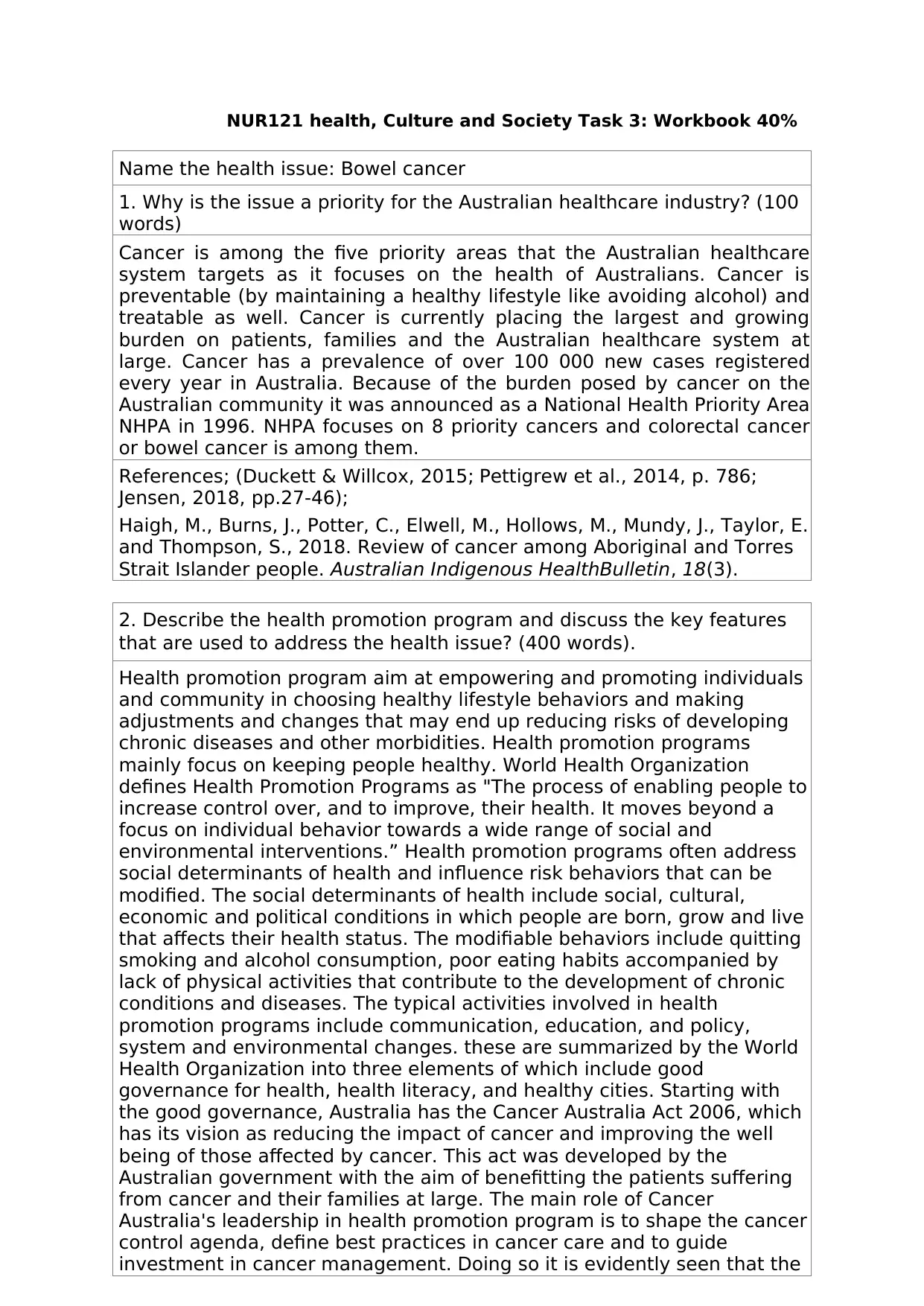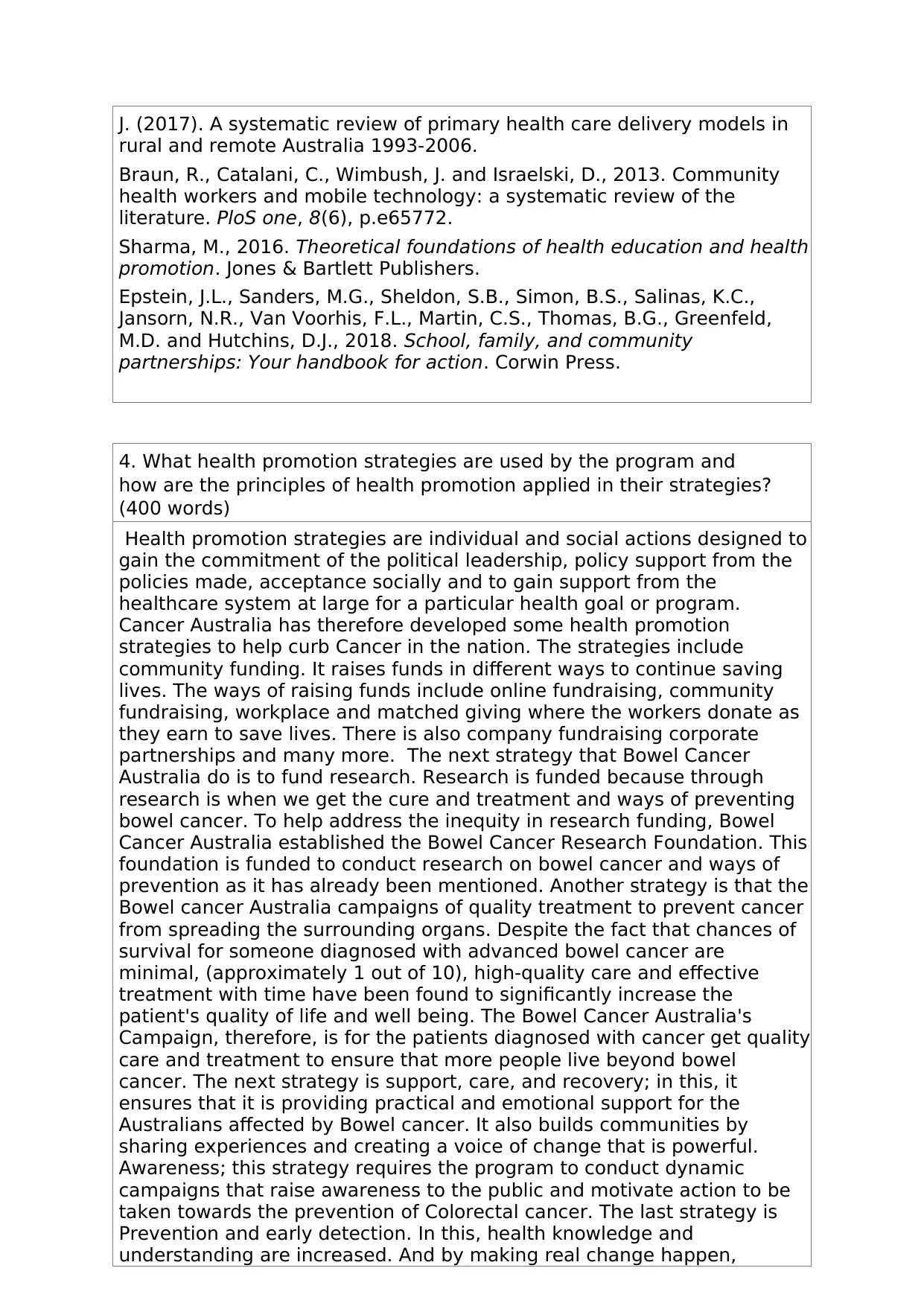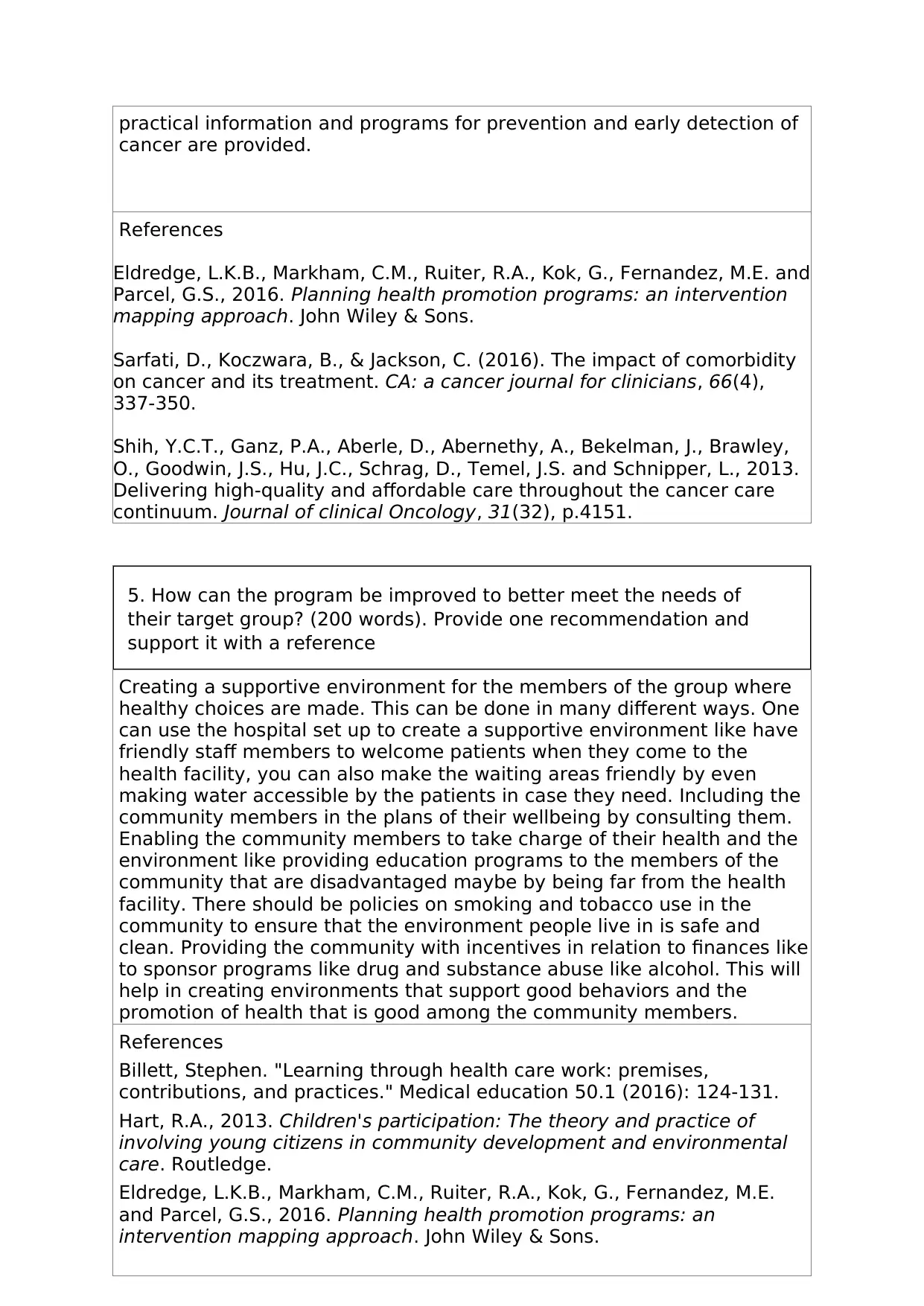NUR121 health, Culture and Society Task 3: Workbook 40%.
VerifiedAI Summary
GOAL:
To demonstrate an understanding of the principles of primary health care and health promotion that underpin the development and delivery of a contemporary health promotion program in Australian society .
PRODUCT:
1500 -word response to questions from a workbook provided in the assessment resources.
FORMAT:
This workbook is about a health promotion program that targets a health issue in contemporary Australian society. The responses to the questions should focus on the health issue experiences of the target group and evaluate the identified health promotion program. The workbook is organised using questions that are not part of the word count. Academic writing is expected in each response and dot points are not acceptable.
CRITERIA:
Describe the health issue and why it is a priority in Australia
Discuss the health promotion program and key features that address the health issue
Evaluate the health promotion program and apply principle
![[object Object]](/_next/static/media/star-bottom.7253800d.svg)
![[object Object]](/_next/static/media/star-bottom.7253800d.svg)




